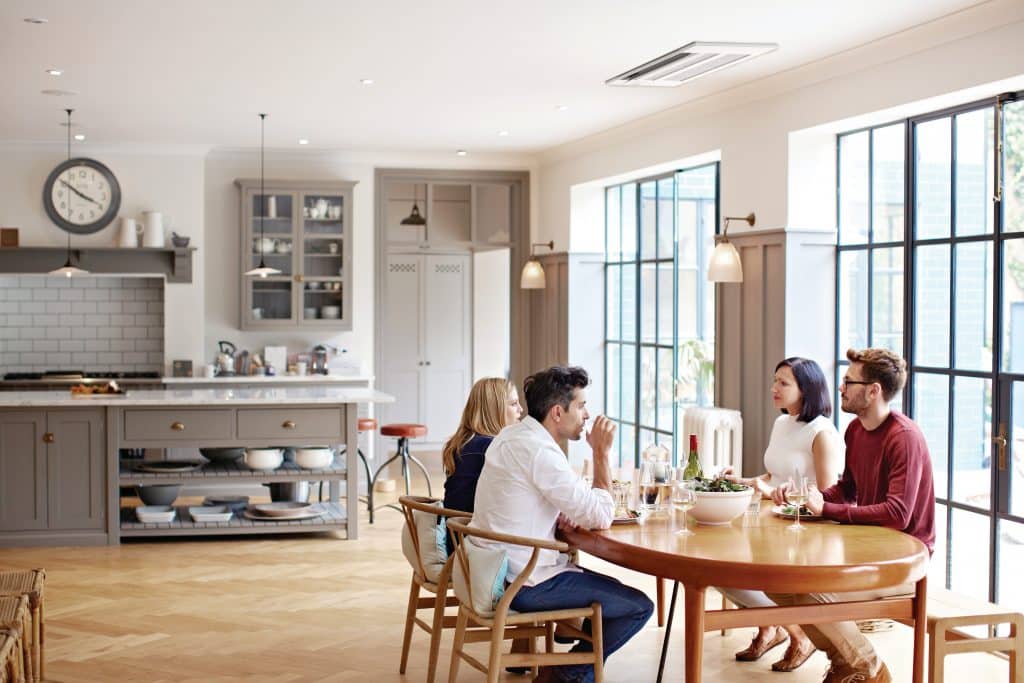When you think of heating, cooling, and ventilation, “fun” usually isn’t the first word that pops to mind, but after you read this list, it will be. To learn about the history of air conditioning and comfort cooling, check out these fun facts. They’re so cool, they’ll make you hot.

The Interesting History of Air Conditioning
- Arguably, the world’s first commercial cooling systems were created in 180 AD by Ting Huan, a famed inventor from the Han dynasty. The fan featured seven ten-foot diameter wheels, cranked by a single person. It could cool a large hall full of people.
- In the 1840s, Dr. John Gorrie used ice from northern lakes to cool his hospital rooms in Florida. He believed that cooling was critical for reducing diseases such as malaria, and eventually, he invented a machine that created ice using water, wind, horses, and steam. That set the stage for modern cooling.
- Before air conditioning was invented, people used a variety of architectural styles to keep their homes semi-cool. One style, popular in the South, was the dogtrot house. This design featured a small cooking cabin separate from the main house but connected with an open-air corridor.
- In 1882, Schuyler Skaats Wheeler invented the electric fan.
- In 1902, just 20 years later, Willis Carrier went a step further and invented the first air conditioner. The 26-year-old got the idea while looking at fog on a train platform in Pittsburgh. He founded the Carrier Engineering Corporation 13 years later in 1915.
- In 1903, the New York Stock Exchange became one of the first famous buildings to use air conditioning.
- In the United States, the first residential air conditioning system was in the Charles Gates mansion. Built in 1913, this Minneapolis home was 38,000 square feet, and surprisingly, it was demolished in 1933 after the original owner died and no one wanted (or could afford) to buy a palatial home with AC.
- Prior to the invention of modern air conditioning, people used to cool their homes or businesses with ice, which was often harvested in one-ton blocks. As air conditioning manufacturers began to advertise their products, they wanted to use terms their customers could understand so they used the phrase “ice power” or referred to their systems as one-ton ACs. An air conditioner with a one-ton capacity essentially produces as much cooling as a melting ton of ice. To put it in modern terms, that’s equivalent to 12,000 BTUs.
- Summer blockbuster movies got their start thanks to air conditioning. In the summer, people often went to movie theaters to enjoy the air conditioning. Production companies took advantage of this fact, and they began to release their biggest hits in the summer. Although many people now have air conditioning in their homes and they no longer have to seek refuge from the heat at the theaters, the tradition continues today.
- Carrier Engineering Company installed the first air conditioning system in the West Wing of the White House in 1930, during Herbert Hoover’s presidency. In 1933, while Franklin D. Roosevelt was president, air conditioning units were installed in the private quarters of the White House.
- In 1932, inventors H.H. Schultz and J.Q. Sherman began to sell the first window air conditioning units. Due to high prices, sales were slow.
- In 1939, the automobile manufacturer Packard began installing air conditioning systems (called “weather conditioners”) in its vehicles. This was the first car manufacturer to offer AC, but there was a company in New York that retrofitted ACs for cars as far back as 1933.
- By the 1960s, air conditioning was affordable and widespread. People took advantage of comfort cooling, and they started to move to hot states such as Arizona and Florida.
Fun Air Conditioning Energy Facts
- If all the electric resistant heating systems in the United States were replaced with heat pumps accompanied by ductless cooling systems, that would reduce the total residential energy usage by 2%.
- Although it varies significantly by area and home size, the average American family spends about $2,200 on energy costs every year, and approximately 48% of those costs are for heating and cooling. Heating accounts for 42% of the total, while cooling only takes up just 6% of the average family’s energy budget.
- Annually, the average American household uses 40.4 million BTUs for heating and only 9.3 million BTUs for cooling. That means that contrary to popular belief, cooling has a much smaller carbon footprint than heating.
- The world’s largest HVAC system is in the Holy Mosque in Makkah (Mecca), Saudi Arabia. To cool a space that sees up to 1 million visitors a month in a climate where temperatures frequently top 100 degrees, the system has 135,000 tons of refrigeration capacity.
- Since 2000, over 95% of new homes in the United States come with air conditioning. Prior to 1940, the rate was less than a third.
- Installation quality directly affects efficiency. According to research from 2012, New York City building owners lose between $130 and $180 million per year in energy costs related to poorly installed cooling systems.
- Energy Star ductless heating and cooling systems help homeowners reduce their cooling costs by about 30% to 40% or more compared to forced air HVAC systems. Many home and business owners are starting to make this leap.
More Cool AC Facts
- Homes with low humidity levels tend to feel cooler than homes with high humidity. That’s because the dry air causes the moisture on your skin to evaporate, helping to cool you down.
- Air conditioning saves lives. An analysis of suicides in Toronto, Ontario and Jackson, Mississippi indicates that suicide rates increase with heat waves. Additionally, when people don’t have access to cooling, they become more likely to die. Tragically, 739 people who didn’t have AC died during a Chicago heat wave in 1995.
- Excessive heat also reduces productivity. Based on research from NASA, telegraph operators make an extra five mistakes per hour when the temperature is 80 degrees and a stunning 60 mistakes per hour when the temperature is 95 degrees. Over time, the rate of errors increases, and at 95 degrees, operators start to make 138 mistakes per hour by the third hour in the heat.
- Ductless cooling systems can be retrofitted into any home or business, with minimal disruption. Residential installation can take less than a day, while large commercial jobs can be done piecemeal or zone by zone to avoid interruptions to productivity.
- Over the next 30 years, demand for air conditioning is set to triple. Analysts predict that 5.6 billion buildings will have AC by 2050, and to make that happen, consumers need to buy 10 new air conditioners every second for the next 30 years. That’s the equivalent of 600 air conditioners every minute and 3,600 air conditioners every hour.
Air conditioners have come a long way since their inception and we rely on them every year to keep homes and businesses cool during warmer months. These impressive cooling facts are sure to leave you with a little gratitude next time you turn on your AC!

